第29章 MONEY OR SIMPLE CIRCULATION(10)
Returning to the complete circuit C --M --C,we can see that in it one commodity passes through the entire series of its metamorphoses.But at the same time as this commodity begins the first phase of its circuit and undergoes the first metamorphosis,another commodity commences the second phase of the circuit,passes through its second metamorphosis and drops out of circulation;the first commodity,on the other hand,enters the second phase of the circuit,passes through its second metamorphosis and drops out of circulation,while a third commodity enters the sphere of circulation,passes through the first phase of its cycle and accomplishes the first metamorphosis.Thus the total circuit C --M --C representing the complete metamorphosis of a commodity is simultaneously the end of a complete metamorphosis of a second commodity and the beginning of a complete metamorphosis of a third commodity;it is therefore a series without beginning or end.To demonstrate this and to distinguish the commodities we shall use different symbols to denote C in the two extremes,e.g.,C'--M --C".Indeed,the first term C'--M presupposes that M is the outcome of another C --M,and is accordingly itself only the last term of the circuit C --M --C',while the second term M --C''implies that it will result in C"--M,and constitutes the first term of the circuit C"--M --C'",and so on.It is moreover evident,that,although M is the outcome of a single sale,the last term M --C may take the form of M --C'+M --C''+M --C"',and so forth;in other words it may be divided into numerous purchases,i.e.,into numerous sales and hence numerous first terms of new complete metamorphoses of commodities.While in this way the complete metamorphosis of a single commodity forms not only a link of just one sequence of metamorphoses without beginning or end,but of many such sequences,the circulation of the world of commodities --since every individual commodity goes through the circuit C --M --C --constitutes an infinitely intricate network of such series of movements,which constantly end and constantly begin afresh at an infinite number of different points.But each individual sale or purchase stands as an independent isolated transaction,whose complementary transaction,which constitutes its continuation,does not need to follow immediately but may be separated from it temporally and spatially.Because every particular cycle C --M or M --C representing the transformation of one commodity into use-value and of another into money,i.e.,the first and second phase of the circuit,forms a separate interval for both sides,and since on the other hand all commodities begin their second metamorphosis,that is turn up at the starting point of the circuit's second phase,in the form of gold,the general equivalent,a form common to them all,in the real process of circulation any M --Cmay follow any particular C --M,i.e.,the second section of the life cycle of any commodity may follow the first section of the life cycle of any other commodity.For example,A sells iron for £2,and thus C--M or the first metamorphosis of the commodity iron has taken place,but for the time being A does not buy anything else.At the same time B,who had sold two quarters of wheat for £6two weeks ago,buys a coat and trousers from Moses and Son with the same 5~6,and thereby completes M --C or the second metamorphosis of the commodity wheat.The two transactions M --C and C --M appear to be parts of the same sequence only because.
as M [money or]gold,all commodities look alike and gold does not look any different whether it represents transformed iron or transformed wheat.
In the real process of circulation C --M --C,therefore,represents an exceedingly haphazard coincidence and succession of motley phases of various complete metamorphoses.The actual process of circulation appears ,therefore,not as a complete metamorphosis of the commodity,i.e.,not as its movement through opposite phases,but as a mere accumulation of numerous purchases and sales which chance to occur simultaneously or successively.
The process accordingly loses its distinct form,especially as each individual transaction,e.g.,a sale,is simultaneously its opposite,a purchase,and vice versa .On the other hand,the metamorphoses in the world of commodities constitute the process of circulation and the former must therefore be reflected in the total movement of circulation.This reflection will be examined in the next section.Here we shall merely observe that the C at each of the two extremes of the circuit C --M --C has a different formal relation to M.The first C is a particular commodity which is compared with money as the universal commodity,whereas in the second phase money as the universal commodity is compared with an individual commodity.
The formula C --M --C can therefore be reduced to the abstract logical syllogism P --U --I,where particularity forms the first extreme,universality characterises the common middle term and individuality signifies the final extreme.
The commodity-owners entered the sphere of circulation merely as guardians of commodities.Within this sphere they confront one another in the antithetical roles of buyer and seller,one personifying a sugar-loaf,the other gold.